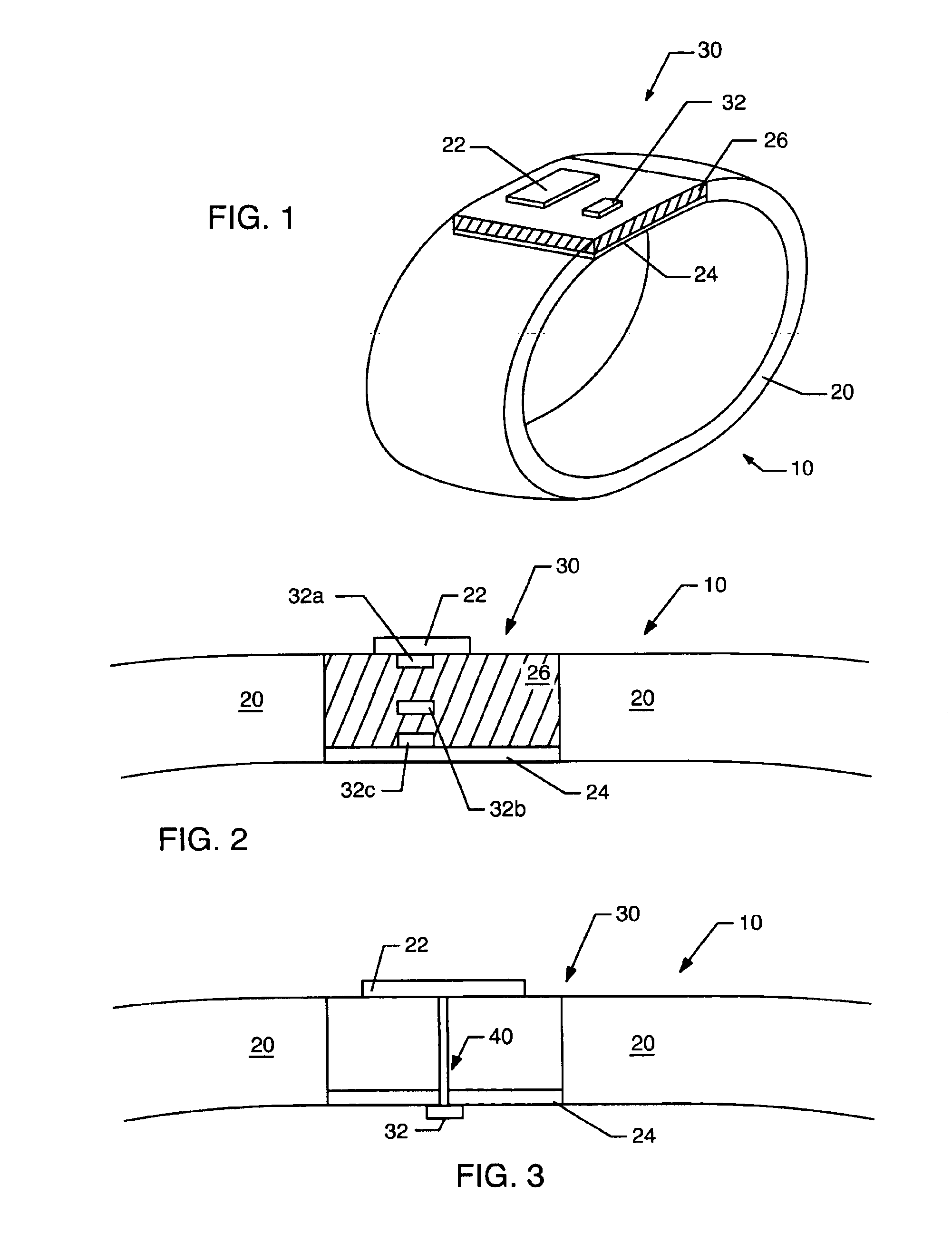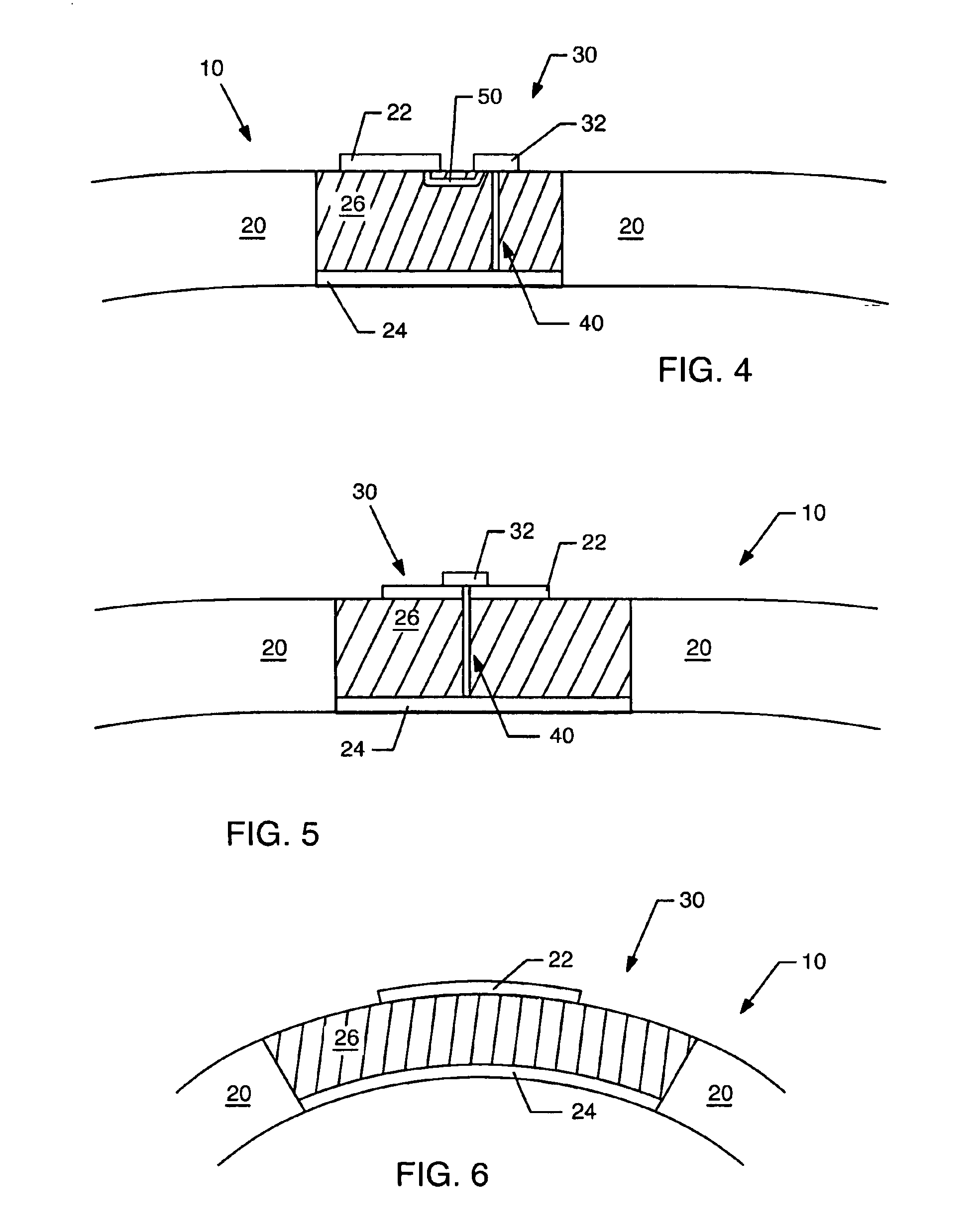Microstrip antenna for an identification appliance
a microstrip antenna and appliance technology, applied in the direction of mechanical actuation of burglar alarms, near-field systems using receivers, instruments, etc., can solve the problems of poor transmission, inefficient radiators and receptors of antennas which are a small fraction of wavelengths in linear dimensions, and inconvenient operation
- Summary
- Abstract
- Description
- Claims
- Application Information
AI Technical Summary
Benefits of technology
Problems solved by technology
Method used
Image
Examples
Embodiment Construction
[0022]As used in this specification, the meaning of “in,” whether alone or in a compound such as “therein,” includes “in” and “on”; “radio frequency identification” and “RFID” refer to identification by radio frequency communication.
[0023]FIG. 1 is a representation of an example embodiment of an identification appliance 10 containing a microstrip antenna 30 as a part thereof. The microstrip antenna 30 is preferably a patch antenna. The identification appliance 10 has a structure 20 carrying a communication circuit 32, such as a RFID circuit. The communication circuit 32 may be adapted to communicate with any type of system, network, or device and may use any communication protocol, including Bluetooth or IEEE 802.11. In this embodiment as a band, the identification appliance 10 includes a structure 20 that is suitable to be worn by, attached to, or carried by a person. Preferably, the identification appliance 10 is a wristband and the structure 20 is an elongate, flexible wristband ...
PUM
 Login to View More
Login to View More Abstract
Description
Claims
Application Information
 Login to View More
Login to View More - R&D
- Intellectual Property
- Life Sciences
- Materials
- Tech Scout
- Unparalleled Data Quality
- Higher Quality Content
- 60% Fewer Hallucinations
Browse by: Latest US Patents, China's latest patents, Technical Efficacy Thesaurus, Application Domain, Technology Topic, Popular Technical Reports.
© 2025 PatSnap. All rights reserved.Legal|Privacy policy|Modern Slavery Act Transparency Statement|Sitemap|About US| Contact US: help@patsnap.com



